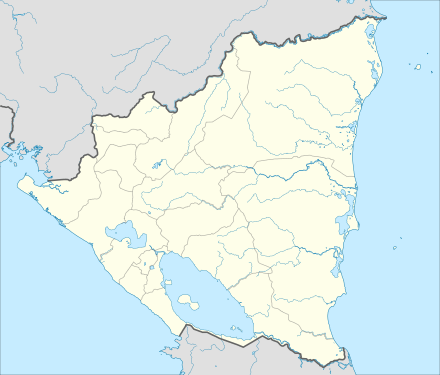Battle of Achuapa
The Battle of Achuapa, or the Achuapa massacre,[3] took place on December 31, 1930 during the American occupation of Nicaragua of 1926–1933.[2]:353
The engagement took place when a ten-man unit of American Marines led by Sergeant Arthur M. Palrang were ambushed by Sandinista forces led by Miguel Angel Ortez after leaving Ocotal to repair the telephone line with San Fernando.
Eight Marines were killed in the firefight (including Palrang[4]), with the two survivors being wounded. It was the largest loss of American life in a single battle during the occupation of Nicaragua.
The battle resulted in the Sandinistas capturing "two Browning automatic rifles, one Thompson submachine gun, three Springfield rifles, and eight fully equipped mules."[5] The battle lasted two and a half hours.[1]
In the United States, the incident reignited controversy over the military occupation of Nicaragua. On 2 January 1931, Senator William E. Borah, the Chairman of the Senate Foreign Relations Committee, called for a withdrawal of American military personnel from Nicaragua.[6]
American casualties
Killed:
- Sergeant Arthur M. Palrang
- Corporal Irving T. Aron
- Private Lambert Bush
- Private Edward E. Elliott
- Private Joseph A. Harbaugh
- Private Frank Kosieradzki
- Private Richard J. Litz
- Private Joseph A. McCarty
Wounded:
- Private Mack Hutcherson
- Private Frank A. Jackson[4]
References
- Beede, Benjamin R. (May 1, 1994). The War of 1898 and U.S. Interventions, 1898–1934: An Encyclopedia. New York City: Routledge. p. 3.
- Musicant, I, The Banana Wars, 1990, New York: MacMillan Publishing Co., ISBN 0025882104
- "The Wyoming Tragedy". Leatherneck. Archived from the original on 9 April 2014. Retrieved 9 April 2014.
- "Marine Corps Casualties". The Sandino Rebellion, 1927–1934. Retrieved 9 April 2014.
- Macaulay, Neill (February 1998). The Sandino Affair. Chicago: Quadrangle Books. p. 183.
- Macaulay, Neill (February 1998). The Sandino Affair. Chicago: Quadrangle Books. pp. 183–184.
